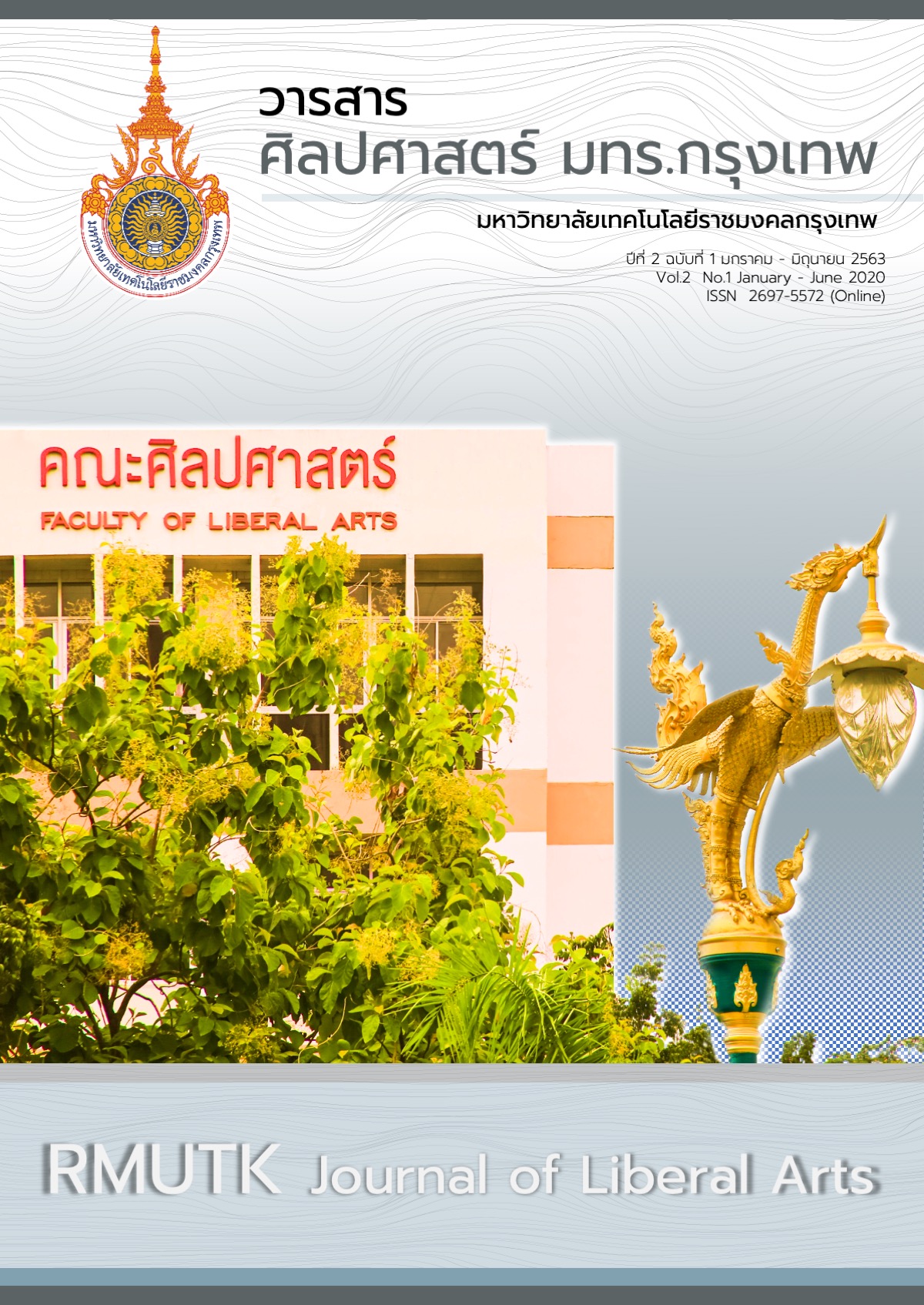Word Clouds and English Language Teaching in Thai Classroom
Main Article Content
บทคัดย่อ
Word clouds or text clouds are graphical representations of word frequency, which are shown in different sizes or colors according to their importance and occurrences. Recent research in English language teaching has suggested using word clouds for studying vocabulary, getting overview of students’ written texts, as well as engaging students to read passages. This paper, therefore, intends to examine teacher’s and students’ attitudes on using word clouds as a pre-reading activity for teaching Thai university students. The participants in this study were twenty Thai university students and an English instructor at Rajamangala University of Technology Phra Nakhon, Bangkok, Thailand. They were asked to complete a Likert scale questionnaire and open-ended questions to report their attitudes towards word clouds as a pre-reading activity. The results obtained from university students showed that they expressed positive attitudes towards using word clouds because it was interesting, helped in creating learning motivation, and setting up an interactive classroom activity. In addition, the English instructor also reported that word clouds could draw students’ attention to English reading texts and could help students to predict what the story was about. Pedagogical implications and suggestions are proposed in this paper.
Article Details
เอกสารอ้างอิง
Baralt, M., Pennestri, S., & Selvandin, M. (2011). Using Wordles to Teach Foreign Language Writing. Language Learning & Technology, 15(2), 12-22.
Bromley, K. (2013). Using Word Clouds in the Classroom. The Utah Journal of Literacy,16(1), 39-41.
Brooks, B., Gilbuena, D., Krause, S., & Koretsky, M. (2014). Using Word Clouds for Fast, Formative Assessment of Students’ Short Written Responses. Chemical Engineering Education, 48(4), 190-198.
Buettner, D. (2005). The Secrets of Long Life. National Geographic, 208(5), 25-26.
Dalton, B., & Grisham, D.L. (2011). Evoc Strategies: 10 Ways to Use Technology to Build Vocabulary. The Reading Teacher, 64(5), 306-317.
DeNoyelles, A., & Reyes-Foster, B. (2015). Using Word Clouds in Online Discussions to Support Critical Thinking and Engagement. Online Learning, 19(4), 1-12.
Ellis, R. (1997). Second Language Acquisition. Oxford: Oxford University press.
Feinbert, J. (2014). Wordle. Retrieved December 7th, 2018, from http://www.wordle.net/create
Hakuta, K. (2018). Wordsift: Having Fun with Learning Words. Teaching English as a Second of Foreign Language, 22(2), Retrieved from http://www.tesl-ej.org/wordpress/issues/volume22/ej86/ej86m1/
Hakuta, K. & Wiles, S. (2018). Wordsift. Retrieved November 22nd, 2018, from https://wordsift.org/
Kitchakarn, O. (2015). EFL Learners' Attitudes towards Using Computers as a Learning Tool in Language Learning. Turkish Online Journal of Educational Technology-TOJET, 14(2), 52-58.
Kotchana, S. & Tongpoon Patan asorn, A. (2015). EFL Learners’ Vocabulary Size: A Case in the Northeastern Region of Thailand. AJE, 1(1), 9-26.
Leki, I., & Carson, J. G. (1994). Students' Perceptions of EAP Writing Instruction and Writing Needs across the Disciplines. TESOL Quarterly, 28(1), 81-101.
Mallery, P., & George, D. (2003). SPSS for Windows Step by Step: A Simple Guide and Reference 11.0 update (4th ed.). Boston: Allyn & Bacon.
Martínez-Mesa, J., González-Chica, D. A., Duquia, R. P., Bonamigo, R. R., & Bastos, J. L. (2016). Sampling: How to Select Participants in My Research Study?. Anais Brasileiros de Dermatologia, 91(3), 326-330.
Miley, F., & Read, A. (2011). Using Word Clouds to Develop Proactive Learners. Journal of the Scholarship of Teaching and Learning, 91-110.
Nation, I. (2001). How Many High Frequency Words Are there in English. Language, Learning and Literature: Studies presented to Hakan Ringbom. Abo Akademi University, English Department Publications, 4, 167-181.
Moir, J. & Nation, P. (2008). Vocabulary and Good Language Learners. In C. Griffiths (Ed.), Lessons from Good: Language Learners (pp. 159–173). Cambridge: Cambridge University Press.
Petchinalert, S. & Aksornjarun, P. (2017). English Reading Strategies and Proficiency: A case study of Thai EFL teachers. Journal of Liberal Arts, Prince of Songkla University, Hat Yai Campus, 9(2), 117-139.
Srisa-ard, B. (2003). Basic Research. Bangkok: Suweeriyasarn.
Steinbock, D. (2006). TagCrowd. Retrieved from December 21st, 2019, from https://tagcrowd.com/
Tafazoli, D. (2013). Wordling: Using Word Clouds in Teaching English Language. International Journal of Instructional Technology and Distance Learning, 10(8), 53-58.
TafazoIi, D., Chirimbu, S. C., & Dejica-Cartiş, A. (2014). Web 2.0 in English Language Teaching: Using Word Clouds. Professional Communication and Translation Studies, 7(1), 167-172.
Tracy, S. J., Geist-Martin, P., Putnam, L., & Mumby, D. (2013). Organizing Ethnography and Qualitative Approaches. In L. L. Putnam, & D. K. Mumber (Eds.), The SAGE Handbook of Organizational Communication: Advances in Theory, research, and Methods (pp. 245-270). London: Sage Publications.
Warmbrod, J. R. (2014). Reporting and Interpreting Scores Derived from Likert-Type Scales. Journal of Agricultural Education, 55(5), 30-47.
Warner, W., & Jones, J. (2011). The Wonder of Words: Using Technology to Support Vocabulary Instruction. The Agricultural Education Magazine, 83(6), 7-9.


